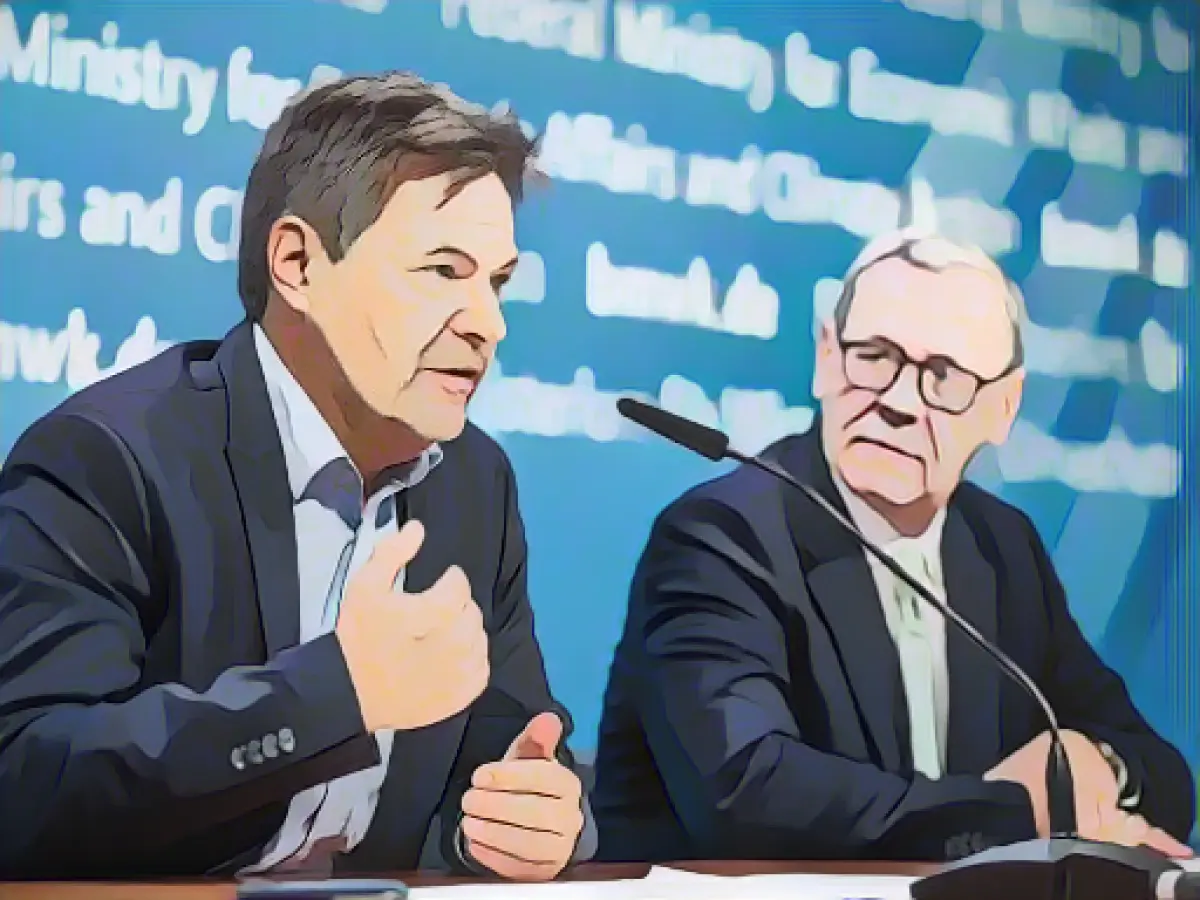The chicken and the egg: plans for the German hydrogen network
Great hopes are pinned on hydrogen. After all, if green electricity is used in its production, it is very climate-friendly. However, the infrastructure for hydrogen transportation is currently still lacking. This is set to change - and Federal Economics Minister Robert Habeck (Greens), together with a representative of the German gas transport companies, presented details on how on Tuesday in Berlin.
"We now have to build a network for an energy source that is not yet there," said Habeck, describing the situation. Or in the words of Thomas Gößmann, CEO of FNB Gas, the association of supra-regional gas transport companies: "We are making advance payments to solve the chicken-and-egg problem."
What is the hydrogen core network about?
The core network is to include the most important pipelines of the future hydrogen transport and import infrastructure, a total of 9700 kilometers of pipelines. Habeck compared this to the highways in the road network. The feed-in capacity should be 270 terawatt hours. For the year 2030, a demand of 95 to 130 terawatt hours is currently expected, said Habeck. "That means we are planning for the future." The Association of Local Utilities (VKU) praised this as far-sighted. According to Gößmann, 60 percent of the hydrogen core network is to be covered by converting existing gas pipelines.
Who will pay for all this?
The investment costs of 19.8 billion euros for the core network are to be borne by the private sector. However, the German government is stepping in with a so-called amortization account. The idea behind this is to spread the fees over a longer period of time. For example, the grid fees for hydrogen consumers are initially to be capped so as not to jeopardize the politically desired hydrogen ramp-up.
However, as only a few users of the core grid are expected in the first few years, a cost gap will remain in view of the high investment costs. This difference is to be financed by the federal government using the amortization account. If more users are connected to the grid later and pay fees, the money is to be recouped. If this does not happen by 2055, the federal government will largely make up the shortfall, but the operators of the hydrogen core network will cover up to 24 percent. "With this "fee shift", future users will therefore share the costs of setting up the network," explained the ministry. The Federal Cabinet is to decide on the establishment of the account this Wednesday, Habeck said.
What about smaller lines?
The planning for the state, federal and district roads of the hydrogen network, as Habeck called them, still needs to be done. This is to begin this Wednesday following the necessary decision by the federal cabinet, said Habeck.
The German Association of Energy and Water Industries (BDEW) explained that it was right to start planning the core network, but noted: "In order to make Germany as an industrial location climate-neutral and future-proof, the framework conditions for the connecting lines to the customer (distribution networks) must now be created as a matter of urgency." 1.8 million potential hydrogen customers in the industrial and commercial sector are connected to the gas distribution network. These would not be reached without small-scale branched services.
What role will hydrogen play in the future?
Hydrogen is an important source of hope for the energy transition, which should help to reduce greenhouse gas emissions in industry and other areas in the future.
Where will the hydrogen come from?
According to Habeck, Germany will produce 30 to 50 percent of its hydrogen requirements itself in the long term and import the rest. This is to be done via pipelines or in the form of ammonia by ship. Habeck emphasized that this would make Germany less dependent on imports than is currently the case with oil, gas and hard coal, where almost 100 percent is imported. Some of the future hydrogen imports are to come from Norway, but the German government is also hoping for African countries such as Nigeria, which have better conditions for solar power thanks to more hours of sunshine.
What happens next?
The Federal Ministry of Economics is currently working "at full speed" on a hydrogen acceleration law, which should be passed by the cabinet this year, said Habeck. This should create the conditions for "maximum acceleration", similar to the floating import terminals for liquid gas.
- "The development of hydrogen production methods that are particularly energy-efficient for our climate is an important next step, as the success of the hydrogen network relies heavily on this."
- "To effectively transition to a hydrogen economy, it's crucial that we also invest in technologies for hydrogen storage and conversion to electricity, in addition to building the hydrogen network."
Source: www.dpa.com








